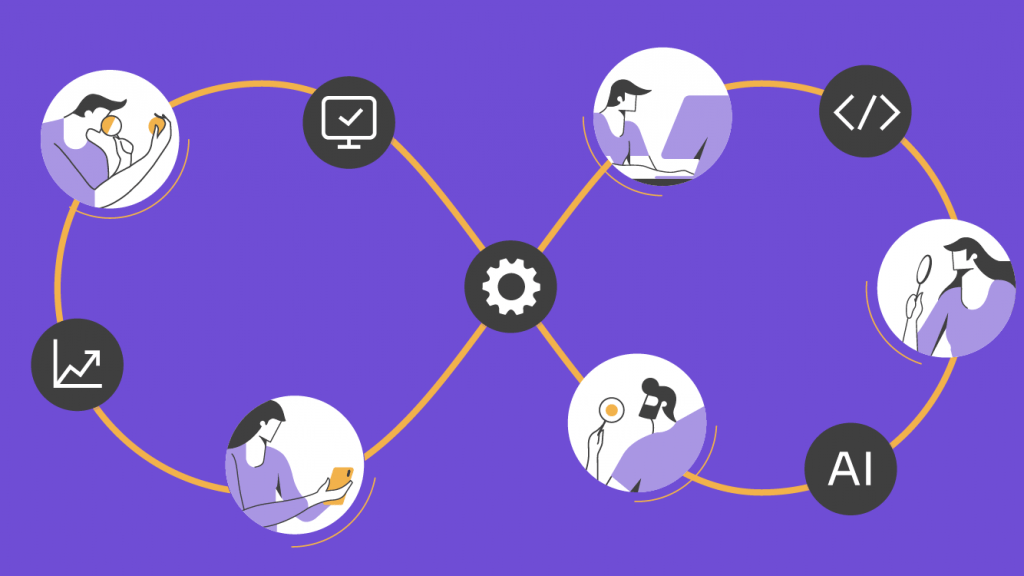Enhance your testing process with a Requirements Traceability Matrix. Strengthen QA strategies and achieve seamless project alignment with improved traceability.


Understanding the importance of a requirements traceability matrix (RTM) is crucial for achieving your project goals. In this article, we explore the importance of a requirements traceability matrix in software quality assurance, covering its components, and benefits, along with its versatility across industries and adaptability within Agile methodologies.
Contact us to streamline your RTM process and elevate your software quality!
In-Depth Look at the RTM
What is The Requirements Traceability Matrix?
The Requirements Traceability Matrix (RTM) is a structured document that maps and traces user requirements to their corresponding test cases, deliverables, and related activities. It supports teams in mapping test cases, identifying any gaps, tracking progress in achieving full test coverage, and maintaining alignment with project goals.
Its primary purpose is to confirm that all requirements defined for a system are covered by test cases, reducing the risk of missing functionality during testing. By providing clear traceability, the RTM enhances visibility throughout the project lifecycle and supports comprehensive testing and successful project delivery.
Components of an RTM
An RTM typically includes the following components:
- Requirement ID: A unique identifier for each requirement.
- Requirement Description: A detailed description of the requirement.
- Test Case ID: A unique identifier for each test case.
- Test Case Description: A detailed description of the test case.
- Status: The current status of the test case (e.g., passed, failed, in progress).
These components form the foundation of the RTM’s structure, allowing teams to consolidate critical information into one document that connects product requirements, specific features, and test cases. This integrated view enables product teams to stay aligned, track progress efficiently, and showcase how software helps maintain traceability and consistency across the project.
What Are Artifacts in an RTM?
In the context of a Requirements Traceability Matrix, artifacts refer to any project deliverables or documentation that support the fulfillment of a requirement. These may include source code, design specifications, user stories, test cases, acceptance criteria, and other project documentation.
Including relevant artifacts in the RTM strengthens traceability and helps teams maintain a consistent record and preserve essential information across the project lifecycle.
Benefits of Using an RTM
The Requirements Traceability Matrix (RTM) offers significant advantages to project teams. Here’s a breakdown of its key benefits:
- Improved Traceability: The RTM connects every requirement to its corresponding deliverables, test cases, and other artifacts. This clear traceability helps teams track the status of each requirement and supports informed decision-making across the software development lifecycle.
- Enhanced Quality Assurance: By linking requirements to test cases, the RTM fosters comprehensive testing coverage. It reduces the risk of missing functionalities, helping teams to deliver a more robust and reliable product through stronger validation processes and coverage mapping.
- Streamlined Communication: The RTM provides a centralized reference for stakeholders, simplifying communication around requirements and progress. This transparency supports collaboration between development, QA, and business teams, and keeps the focus on meeting evolving customer requirements throughout the project.
- Risk Reduction: Identifying gaps in requirement coverage early in the project lifecycle minimizes the chance of critical issues arising later. It also contributes to proactive strategies that help mitigate risks before they affect delivery or performance.
- Efficient Change Management: When requirements evolve, the RTM helps assess the impact of changes on deliverables and testing. This flexibility allows teams to adapt quickly while maintaining control over the project scope and preserving traceability across iterations.
- Alignment with Project Goals: By keeping requirements tied to the project’s objectives, the RTM strengthens alignment with intended outcomes. This alignment supports task prioritization and effective resource allocation.
- Simplified Compliance and Auditing: In regulated industries, the RTM is invaluable for demonstrating compliance with standards and requirements. It provides a documented history of how each requirement was validated, offering traceable evidence aligned with business goals, complying with legal guidelines, and documenting every step through a clear compliance matrix.
- Faster Issue Resolution: The RTM enables teams to identify where issues may arise by providing a detailed view of requirements and their implementation. This facilitates quicker debugging and resolution.
- Better Stakeholder Confidence: With a clear and detailed RTM, multiple stakeholders feel confident in the project’s progress. It highlights that all requirements are being addressed thoughtfully and systematically, not just meeting the bare minimum, but aligning with project expectations and quality standards.
Having explored the benefits of using an RTM, it’s equally important to understand the different types available and how each serves specific project needs.
Revolutionize Your Testing with Abstracta Copilot! Boost productivity by 30% with our new AI-powered assistant for efficient testing.
Types of Traceability in an RTM


The RTM includes several types, each designed to address specific project requirements and stages. Choosing the right type helps teams align their approach with project goals.
Forward Traceability Matrix
This type links requirements to their corresponding deliverables and test cases, focusing on the forward progression of the project. Teams use it to monitor progress and confirm that all requirements lead to concrete actions in design, software testing, and deployment.
Backward Traceability Matrix
Also referred to as the reverse traceability matrix, this type links test cases and deliverables back to their original requirements. It helps teams validate that every output aligns with the scope defined in documents like the technical requirement document, preventing unnecessary changes and maintaining control over the project scope.
Bidirectional Traceability Matrix
It combines forward and backward traceability, offering a comprehensive view of the project. Teams rely on it to connect requirements with deliverables while tracing outputs back to their source. This is effective for complex projects that demand thorough alignment between requirements, test cases, and deliverables.
How to Create a Requirements Traceability Matrix?


Building a Requirements Traceability Matrix (RTM) is a straightforward process that helps teams track and align project requirements. Follow these steps to create a clear and effective RTM:
Step 1#: Set Clear Goals
Start by defining why you need the RTM. Ask yourself: What do we want to track? Which requirements are most critical to the project’s success? Should we focus on forward, backward, or bidirectional traceability? What outcomes are we aiming for—comprehensive testing, regulatory compliance, or something else?
Establishing these objectives helps guide the creation and use of the RTM throughout the project.
Step 2#: Gather All Requirements
Compile all requirements from stakeholders, project documents (including the Business Requirement Document (BRD)), or user stories. Make sure each requirement is specific, measurable, and tied to project goals.
Step 3#: Structure the RTM
Lay out the RTM in columns for key data: requirement ID, description, priority, related test cases, deliverables, and status. Choose a format, such as a spreadsheet or a project management tool, that suits your workflow.
This structure fosters traceability across the product development process and allows quality assurance teams to perform effective impact analysis when changes occur.
Step 4#: Connect Requirements to Outputs
Link each requirement to its corresponding test cases, deliverables, and design elements. This creates a traceable map that clarifies progress and alignment.
Step 5#: Assign Responsibility
Appoint team members to update and manage the RTM. Clear ownership keeps the document accurate and useful as the project evolves.
Step 6#: Validate with Stakeholders
Review the RTM with key stakeholders to confirm that it includes all requirements and connections. Resolve any gaps or errors before using the RTM actively.
Step 7#: Update Regularly
Keep the RTM current as requirements, test cases, or deliverables change. Regular updates help maintain its value as a resource throughout the project.
Pro Tip: Use Automation
Select tools that integrate well with your existing workflows to maximize their impact, especially in larger projects.
Automation reduces manual effort, minimizes errors, and keeps the RTM updated in real time, supporting processes that aim to ensure compliance with evolving requirements. It also allows teams to generate reports and track progress against risks defined in the risk matrix, contributing to early identification of potential risks.
This approach is especially helpful in larger projects, where maintaining consistency and efficiency is critical.
Tools for Managing Requirements Traceability Matrices


Modern tools streamline the management of RTMs by automating processes and integrating them with product development workflows. Relying on specialized requirements management tools and RTM software is essential to maintain consistency, traceability, and alignment throughout the product lifecycle.
Below, we highlight some popular options and the features to prioritize:
Top Tools for RTM Management
- JIRA
- Designed for agile teams, JIRA offers powerful customization and integration options, making it an excellent choice for managing requirements and linking them to development and testing activities.
- Helix ALM
- A comprehensive solution that supports forward and backward traceability. Helix ALM is particularly suited for projects requiring stringent compliance or advanced traceability management.
- Excel Sheets
- A cost-effective option for smaller teams or projects with limited complexity. While less automated, it provides flexibility and simplicity for organizing data manually.
Key Features to Look for:
When selecting an RTM tool, consider features that align with your project’s needs:
- Integration with CI/CD Pipelines
Automating updates and maintaining seamless connectivity between requirements and development workflows. - User-Friendly Interfaces
Tools that are easy to navigate reduce the learning curve and encourage adoption across teams. - Robust Reporting Capabilities
Built-in reporting tools help track test results, identify gaps, and communicate progress effectively with stakeholders.
RTM in Agile Methodologies


Agile frameworks prioritize flexibility and adaptability, and RTMs evolve to reflect these principles. Unlike traditional approaches, RTMs in Agile are dynamic tools that adapt to changing requirements and iterative development cycles.
How RTMs Function in Agile
- Frequent Updates
RTMs are updated regularly to reflect changes in requirements, sprint goals, and testing outcomes, aligning with Agile’s iterative nature. - Integration with Agile Tools
Platforms like JIRA seamlessly incorporate RTMs, enabling real-time tracking of requirements and their connection to development and testing tasks. - Cross-Team Collaboration
Agile emphasizes teamwork, and RTMs support this by fostering alignment between developers, testers, and product owners, promoting a shared understanding of project goals.
Benefits in Agile Projects
- Transparency: Real-time updates improve visibility into progress and requirements coverage.
- Enhanced Collaboration: RTMs reduce miscommunication by centralizing information for all team members.
- Quick Issue Identification: Gaps or overlooked requirements are identified early, minimizing project risks.
As Agile projects thrive on adaptability, the versatility of RTMs becomes even more evident when exploring their applications across industries. Let’s delve into how RTMs are tailored to meet the unique demands of various sectors, from healthcare to retail.
Interested in Agile? Don’t miss this article! Software Development Methodologies: Choose The Right Approach for Your Team
RTM Applications Across Industries


Requirements Traceability Matrices (RTMs) adapt to the unique demands of different industries, supporting critical processes and regulatory requirements. Their flexibility allows teams to align project goals with sector-specific challenges.
Healthcare and Finance:
- Healthcare
- RTMs play a vital role in healthcare projects, helping teams address regulatory requirements such as HIPAA. They track patient data security needs, validate compliance with privacy standards, and link requirements to testing processes, supporting the protection of sensitive information.
- Finance
- Financial institutions rely on RTMs to align requirements with SOX audit protocols and regulatory frameworks. Tracks requirements for SOX audits and data security while enabling traceability of compliance-related needs. By providing a clear traceability path, RTMs help maintain accountability and reduce risks in high-stakes environments.
Technology and eCommerce:
- Technology
- In tech projects, particularly those driven by AI, RTMs connect user stories, features, and functional requirements to testing and development outputs. This alignment enhances project clarity, enabling complex systems to meet functional and performance goals.
- eCommerce
- RTMs in eCommerce are crucial for aligning business objectives with technical implementations. They help map requirements such as payment gateway integration, inventory management, and personalized user experiences to development outputs.
By linking these requirements to usability, security, and performance criteria, teams can deliver optimized solutions that enhance the shopping experience and build customer trust.
- RTMs in eCommerce are crucial for aligning business objectives with technical implementations. They help map requirements such as payment gateway integration, inventory management, and personalized user experiences to development outputs.
In a Nutshell: Tailoring RTMs Matters for All


The Requirements Traceability Matrix (RTM) is a powerful tool that adapts to the unique challenges of different industries, from regulatory compliance in healthcare to customer satisfaction in retail. Tailoring the matrix to fit these needs helps teams stay focused and deliver the outcomes that matter most.
By customizing the matrix to fit sector-specific demands, teams can enhance clarity, accountability, and quality, making the RTM an indispensable resource for successful project delivery.
FAQs about Requirements Traceability Matrix


What Are The 3 Types of Requirements Traceability?
- Forward traceability
- Backward traceability
- Bidirectional traceability
What Are Traceability Links in an RTM?
Traceability links refer to the documented connections between requirements, test cases, and deliverables. These links allow teams to track how each requirement is fulfilled throughout the project and help detect gaps or misalignments early in the development cycle.
How Does an RTM Help Prevent Scope Creep?
By explicitly mapping each requirement to a deliverable or test case, the RTM acts as a boundary for the project scope. This visibility helps avoid scope creep, as it becomes easier to identify when new features or changes fall outside the original set of approved requirements.
Can an RTM Help You Pass Audits?
Absolutely. An RTM provides clear documentation of how each requirement has been addressed, which is often essential to pass audits in regulated industries like healthcare or finance. It serves as evidence of due diligence and traceability throughout the development process.
What Are The 5 Steps of Creating a Requirements Traceability Matrix?
These steps help you create your own requirements traceability matrix, adapted to your team’s structure and project complexity.
- Identify requirements.
- Select a format or tool.
- Map requirements to deliverables.
- Update consistently.
- Validate requirements for accuracy and alignment with project goals.
Want More? These five fundamentals cover the basics, but we’ve developed a 7-step guide for a more detailed approach. Read this full article to explore it further.
What Is a Requirements Traceability Matrix Example?
A useful requirements traceability matrix example might include columns for requirement ID, description, related test cases, responsible team members, and current status. Including these fields allows teams to monitor traceability, testing progress, and project alignment more efficiently
How We Can Help You


With over 16 years of experience and a global presence, Abstracta is a leading technology solutions company with offices in the United States, Chile, Colombia, and Uruguay. We specialize in software development, AI-driven innovations & copilots, and end-to-end software testing services.
Our expertise spans across industries. We believe that actively bonding ties propels us further and helps us enhance our clients’ software. That’s why we’ve forged robust partnerships with industry leaders like Microsoft, Datadog, Tricentis, Perforce BlazeMeter, and Saucelabs, empowering us to incorporate cutting-edge technologies.
Our holistic approach enables us to support you across the entire software development life cycle.
Visit our solutions page and partner us for unmatched requirements traceability solutions!


Follow us on Linkedin & X to be part of our community!
Recommended for You
What is Infrastructure Testing and Why Validation is Key
DORA Metrics in DevOps: A Practical Guide to Boosting IT Performance
Tags In


Abstracta Team
Related Posts
3 Essentials for Releasing Software at Speed Without Losing Quality
How to reduce time to market while maintaining quality? How long does it take at your company, from the time someone in sales or marketing comes up with an idea, to the time that it’s making money and adding value to your users? Let’s say…
4 Reasons Why Agile Testing Is Key to Developing High-Quality Software Products
Agile methodologies are crucial to building up-to- date, high quality software products. This approach bridges the gap between testers and developers, reducing the feedback loop between them, and leading to faster product delivery. Developing software is a complex process that involves various distinct practices such…
Search
Contents
Categories
- Acceptance testing
- Accessibility Testing
- AI
- API Testing
- Development
- DevOps
- Fintech
- Functional Software Testing
- Healthtech
- Mobile Testing
- Observability Testing
- Partners
- Performance Testing
- Press
- Quallity Engineering
- Security Testing
- Software Quality
- Software Testing
- Test Automation
- Testing Strategy
- Testing Tools
- Work Culture





